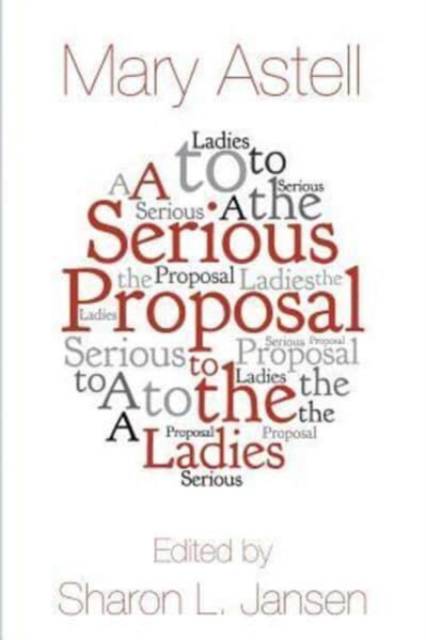
- Afhalen na 1 uur in een winkel met voorraad
- Gratis thuislevering in België vanaf € 30
- Ruim aanbod met 7 miljoen producten
- Afhalen na 1 uur in een winkel met voorraad
- Gratis thuislevering in België vanaf € 30
- Ruim aanbod met 7 miljoen producten
Zoeken
Omschrijving
Throughout her life, in her personal relationships as well as in her role as a public intellectual, the English thinker Mary Astell (1666-1731) supported women, wrote to and for women, and, to the greatest extent possible, moved from advocacy for to action on behalf of women. In her first published work, A Serious Proposal to the Ladies (London 1694), Astell proposed the establishment of an educational institution for women aimed solely at fulfilling their needs, a place where women could withdraw from a harsh and threatening world controlled by men and organized to suit men's desires, irrespective of women's. Perhaps nowhere is her feminist position more clearly articulated than on the title page of this, her first publication: she addresses herself to women, her aim is "the advancement of their true and greatest interest," and she identifies herself as "a lover of her sex."But, despite its importance, no previously available edition of A Serious Proposal to the Ladies has addressed the complications of Astell's prose style, and none has added the kind of glossing and notes that will assist student readers in their engagement with her distinctive voice. This edition, designed for classroom use, provides an ample introduction, a carefully modernized text, helpful glosses and notes, and a useful bibliography with references for further reading.
Specificaties
Betrokkenen
- Auteur(s):
- Uitgeverij:
Inhoud
- Aantal bladzijden:
- 136
- Taal:
- Engels
Eigenschappen
- Productcode (EAN):
- 9780615954035
- Verschijningsdatum:
- 15/02/2014
- Uitvoering:
- Paperback
- Formaat:
- Trade paperback (VS)
- Afmetingen:
- 152 mm x 229 mm
- Gewicht:
- 208 g

Alleen bij Standaard Boekhandel
+ 31 punten op je klantenkaart van Standaard Boekhandel
Beoordelingen
We publiceren alleen reviews die voldoen aan de voorwaarden voor reviews. Bekijk onze voorwaarden voor reviews.








